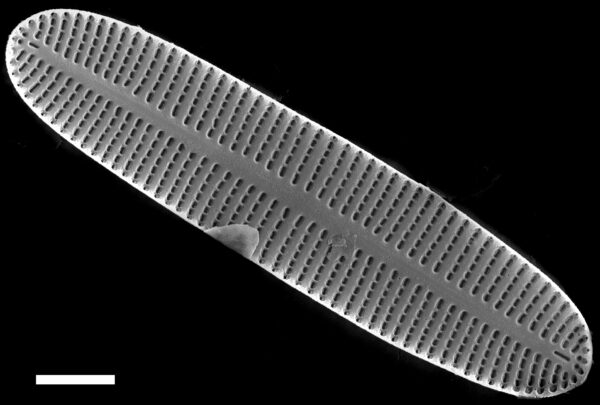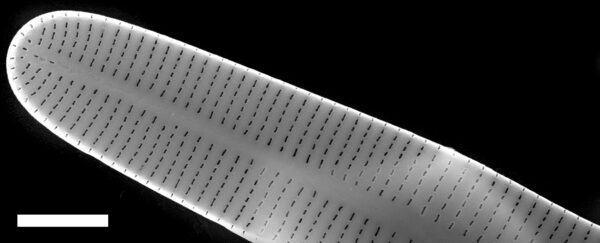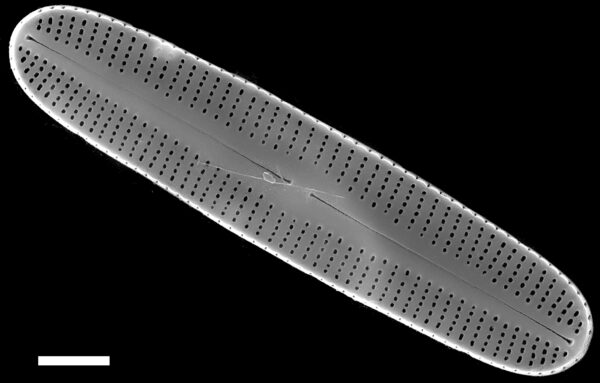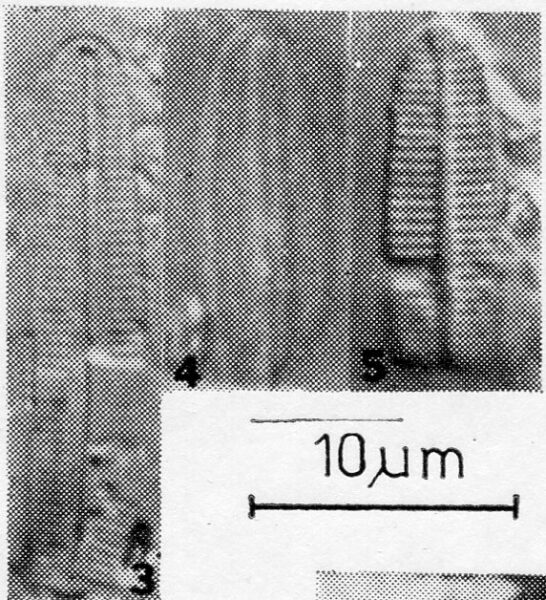Rossithidium anastasiae
-
Category
-
Length Range12-26 µm
-
Width Range3.7-4.5 µm
-
Striae in 10 µm24-29
-
Reported AsAchnanthes lineariformis (Lange-Bertalot 1993)
Achnanthes linearioides (Lange-Bertalot in Lange-Bertalot and Moser 1994)
Achnanthes linearis (Germain 1981)
-
ContributorMarina Potapova - Dec 2011
-
ReviewerLoren Bahls - Jan 2012
Identification
Description
Valves are linear or linear-elliptic with rounded ends. The raphe valve has a linear axial area that gradually widens into a small or almost indistinct central area. The raphe is straight, filiform, and lacks terminal fissures. Internally, the central raphe endings are curved to opposite sides. The rapheless valve has a narrow, linear axial area and no distinct central area. Striae are uniseriate and slightly radiate. Each stria in the middle part of the valve contains 5-6 areolae on valve face. The valve mantle bears one row of areolae.
Autecology
Rossithidium anastasiae is a widely distributed diatom, often found in colder waters in Europe (Mölder & Tynni 1972, Krammer & Lange-Bertalot 2004) and in North America. Considering that most records of R. linearis are in fact R. anastasiae, data in the ANSP databases and catalogues show that this species is often found in low-conductivity lakes and sometimes streams of the northeastern USA, and, occasionally, in the Rocky Mountains. Hofmann et al. (2011) stated that this diatom is mostly found in oligo- to mesotrophic waters of low conductivity.
-
Size Range, µm3
-
Motility
-
Attachment
-
Habitat
-
Colony
-
Waterbody
-
Distribution
- Learn more about this
Citations & Links
Citations
-
Publication Link: doi: 10.1080/0269249X.2011.644636
Links
-
Index Nominum Algarum
-
GenBank
Cite This Page
Potapova, M. (2011). Rossithidium anastasiae. In Diatoms of North America. Retrieved April 25, 2024, from https://diatoms.org/species/rossithidium_anastasiae
Responses
The 15 response plots show an environmental variable (x axis) against the relative abundance (y axis) of Rossithidium anastasiae from all the stream reaches where it was present. Note that the relative abundance scale is the same on each plot. Explanation of each environmental variable and units are as follows:
ELEVATION = stream reach elevation (meters)
STRAHLER = distribution plot of the Strahler Stream Order
SLOPE = stream reach gradient (degrees)
W1_HALL = an index that is a measure of streamside (riparian) human activity that ranges from 0 - 10, with a value of 0 indicating of minimal disturbance to a value of 10 indicating severe disturbance.
PHSTVL = pH measured in a sealed syringe sample (pH units)
log_COND = log concentration of specific conductivity (µS/cm)
log_PTL = log concentration of total phosphorus (µg/L)
log_NO3 = log concentration of nitrate (µeq/L)
log_DOC = log concentration of dissolved organic carbon (mg/L)
log_SIO2 = log concentration of silicon (mg/L)
log_NA = log concentration of sodium (µeq/L)
log_HCO3 = log concentration of the bicarbonate ion (µeq/L)
EMBED = percent of the stream substrate that is embedded by sand and fine sediment
log_TURBIDITY = log of turbidity, a measure of cloudiness of water, in nephelometric turbidity units (NTU).
DISTOT = an index of total human disturbance in the watershed that ranges from 1 - 100, with a value of 0 indicating of minimal disturbance to a value of 100 indicating severe disturbance.
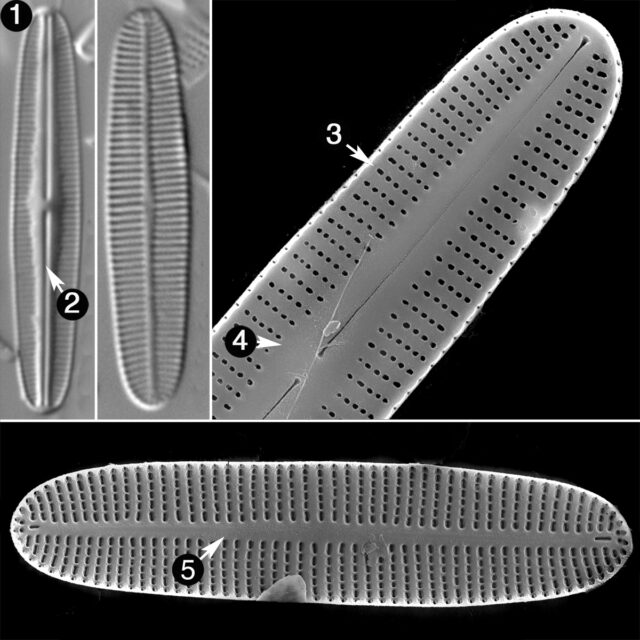
Rossithidium anastasiae
- Valve linear to linear-elliptic
- Raphe straight
- Striae unseriate
- Raphe valve with a small or indisctinct central area
- Rapheless valve with a narrow linear axial area
Valves are linear or linear-elliptic with rounded ends. The raphe valve has a linear axial area that gradually widens into a small or almost indistinct central area. The rapheless valve has a narrow, linear axial area and no distinct central area. Striae are uniseriate and slightly radiate.
 Diatoms of North America
Diatoms of North America






